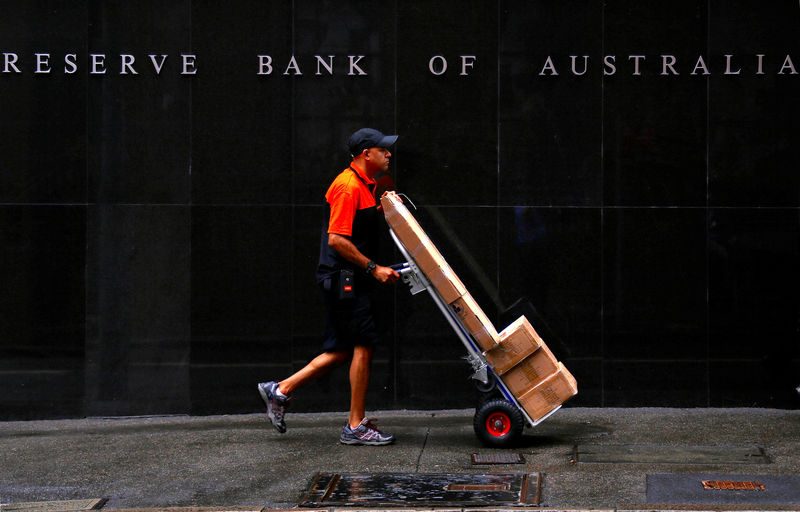By Paulina Duran
SYDNEY (Reuters) - Two of Australia's four largest banks defied calls on Tuesday to pass on a central bank interest rate cut in full, as concerns rise over the impact of record low rates on their margins.
The Reserve Bank of Australia (RBA) had earlier lowered its benchmark cash rate by another quarter-point from 1% in an attempt to kick-start the economy amid sluggish mortgage demand, putting further pressure on banks' profits.
National Treasurer Josh Frydenberg called on lenders to pass on the whole cut to mortgage customers but Commonwealth Bank of Australia (AX:CBA) and National Australia Bank (AX:NAB) both said they would not do so.
"It is the government's expectation that the banks will pass on this 25 basis point rate cut in full," Frydenberg told reporters in Sydney.
With two rate cuts before Tuesday's RBA announcement already eating into Australian banks' net interest margins, analysts have again warned that further central bank action could inflict even more pain.
"This sustained very low interest rates environment will weigh down on net interest margins and hence bank earnings power," said Matthew Wilson, a senior banking analyst at Evans & Partners.
Net interest income for the four largest banks, which dominate about 80% of the deposit and house lending market, could fall by about A$8.4 billion ($5.66 billion) if the central bank moved rates to zero percent, Wilson estimated.
The final impact would depend on a number of other factors including how much of the benchmark rate cut is passed on to customers and banks' interest rate hedging techniques, with the official cash rate widely expected at 0.5% by early next year.
CBA, Australia's top lender, said it faces a "difficult balancing act" with rates approaching zero, raising questions about the potential effectiveness of super easy monetary policy.
It cut its standard variable owner-occupier interest rates, a key gauge, by 13 basis points. NAB, the country's number three lender by market value, lowered home loan rates for owner-occupied customers by 15 basis points.
NAB's Chief Customer Officer for consumer banking, Mike Baird, said costs of deposits are coming under pressure with interest rates at record lows.
"The RBA now has only three, or possibly even fewer, more conventional cuts available to them before they will have to venture into unconventional monetary easing territory -- negative rates, QE (quantitative easing), or bond yield targeting," ING's chief Asia-Pacific economist Rob Carnell said.
UBS analyst Jonathan Mott said that despite the expected pick-up in lending from lower rates, the banks' "fundamentals are increasingly challenged with ultra-low interest rates".
"The benefit to bank revenues would likely be offset by NIM pressure given the rate cuts required to re-stimulate the housing market," he wrote in a note to clients on Tuesday.
Commonwealth Australia Bank (AX:CBA), Westpac Banking Group (AX:WBC), National Australia Bank (AX:NAB), and Australia and New Zealand Banking Group (ANZ) (AX:ANZ) have resisted public pressure to fully pass on the past two central bank rate cuts to customers.
Westpac and ANZ had yet to update the market on whether it would pass on Tuesday's rate cut in full.
Although they remain some of the most profitable banks worldwide, Australia's Big Four reported a combined profit of A$14.5 billion for the first half of their financial years, down 4% from a year prior, as they were hit with sluggish credit growth and billions in remediation costs from wrongdoing.
The fall was also partly driven by a 11 basis point reduction in net interest margins, the difference between the rates paid and charged for money lent by banks, to 1.95%.
As the cash rate falls towards zero, it gets harder to reduce deposit rates to offset the cheaper mortgages they must now offer borrowers, while also losing on lower investment rates.

If rates moved to zero percent, NIM margins could shrink by as much as 26 basis points, Evans & Partners' Wilson said. The calculation excluded all other factors, he added.